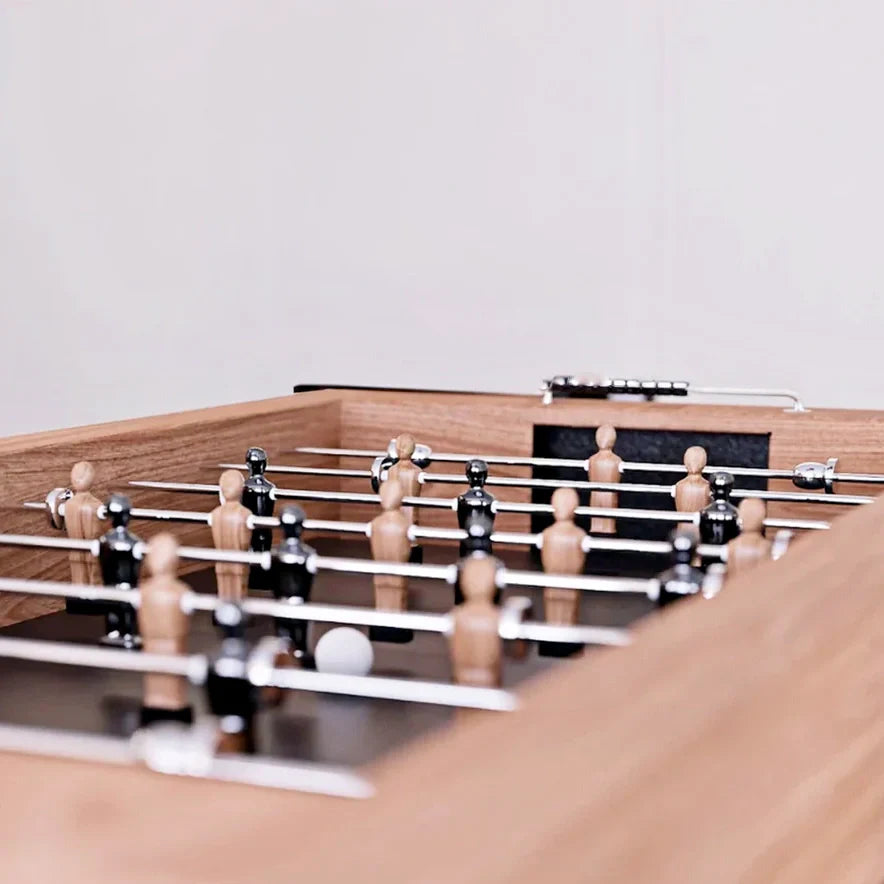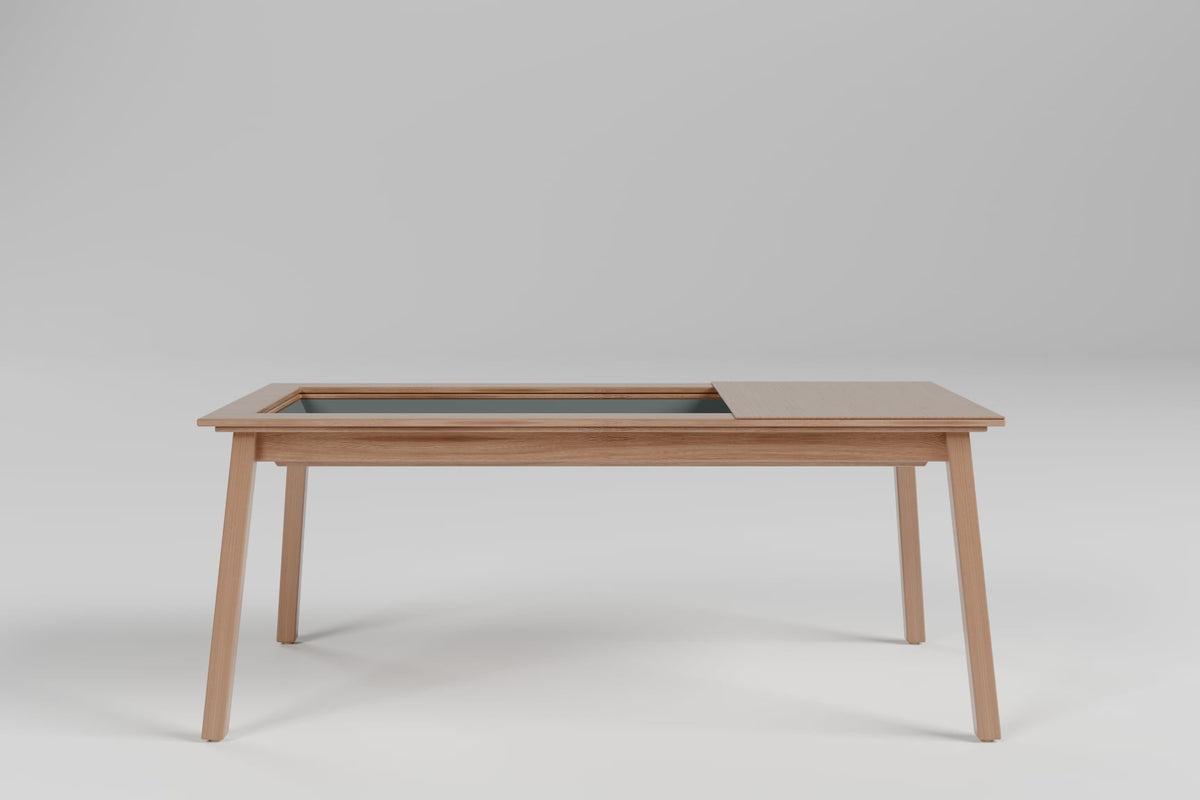The game played on the table is time-based, with each coin lasting between 12 to 17 minutes. After this period, the internal bar drops, preventing any more balls from returning to the front for replay. Players score points by knocking balls into the holes at the other end of the table while avoiding toppling the skittles. The game is often decided by the last ball on the table.
Bar billiards tables are similar to small billiards tables, featuring seven white balls and one red ball. The tables are typically 33.5 inches wide and 56-56.5 inches from spot to far corner, though variations do exist. Instead of pockets, the tables have holes sunk into them, with a specific arrangement of skittles (either thin pins or mushroom-shaped) that must not be toppled. The game involves striking balls in such a way that at least one ball ends up rolling into a hole, scoring points based on the hole's value. The game can end in various ways, including when the baffle-bar drops, preventing potted balls from returning, or when only one ball remains, requiring a special rule to be followed.
Bar billiards is still popular in the South of England and has a rich, storied history, with the first pub league created in Oxford in 1936. Despite its popularity, it has lost ground as most have to American 8-ball pool. The game's rules and equipment can vary, with no national governing body, leading to a wide range of variations in gameplay and equipment.





0 comments